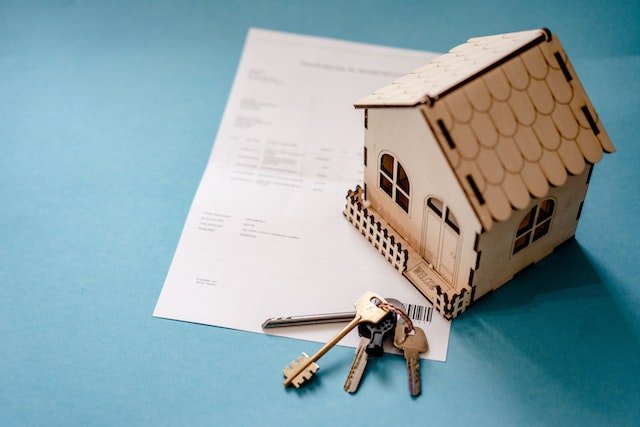As a landlord, before renting out your property to tenants, make sure you have drafted a solid lease agreement. This will help you hold the tenant accountable to certain rules and policies. Consequently, this will help eliminate any potential confusion or misunderstanding on what exactly constitutes a lease violation.
With a lease, you’re able to explain what the tenant’s obligations are. Including, how much rent to pay, and where and when it’s due. Whether you’re starting out as a landlord or just looking to learn more about what goes into making a solid lease agreement, this guide has you covered.
Benefits of Having a Lease Agreement
Both you and your tenant enjoy certain rights and responsibilities as per federal, state, and local landlord-tenant laws. A solid lease agreement can help you communicate all that effectively and concisely. You’ll also be able to save time answering questions that could have easily been addressed by reviewing the lease agreement.
In contrast, oral agreements can be easily forgotten and/or become subject to varying interpretations. Also, oral agreements rarely hold up in court, as it can be tough to prove your word against the tenant’s.
9 Basics that Every Solid Lease Agreement Should Contain
Admittedly, no two rental agreements are ever created the same. That said, certain standards appear across all lease agreements. They include the following:

1. Names of All Adult Occupants
A lease is a legally binding document. It binds both you – the landlord – and the tenant to certain rules and obligations. And since it’s a legally binding document, it means that there must be at least two parties involved at the minimum.
As such, make sure, as the landlord, to include your legal name, as well as those of your tenant(s). This will grant you the right to hold all singing tenants liable for all terms of the lease, including payment of rent.
2. Details About Rent
Rent is what ensures the prosperity of your rental investment. Therefore, make sure to minimize confusion regarding rent-related details. Include the following detailed about rent in your lease agreement:
- Rental Payment Due Dates – For the sake of clarity, make sure the tenant knows the rent due date. For instance, the 1st day of every month or after the grace period.
- Amount of Rent Due – Mention the exact monthly rent price in both figures and words. You may also want to inform the tenant about other fees as well, such as the late fees.
- Rent Increase Policies – Make sure any rent increase policies are mentioned in the lease agreement.
3. Term of the Lease
Indicate both the state and end date of the lease agreement, especially if the rental agreement is a fixed-term lease. Not doing this can leave a loophole that a difficult tenant can exploit to hold over. You can also include a section on lease renewals if you offer them so tenants know the correct procedures and deadlines.

4. Subletting Rules
Whether or not to allow subletting in your rental property squarely lies with you. There are pros and cons for allowing it. If you choose to allow it, then let the tenant know about any applicable rules they will need to abide by. But if you choose not to allow it, then make it clear that it’d be a serious lease violation should the tenant try to do it behind your back.
5. Property Access and Landlord Entry
The Implied Warranty of Quiet Enjoyment guarantees tenants the right to quiet and peaceful enjoyment of their rented premises. That said, you reserve the right to enter a tenant’s rented premises to conduct certain duties such as property repairs and maintenance, and inspection.
To ensure every party’s rights are respected, make sure to define some property access rules. For example, note the reasons for entry, time of entry, frequency, and advance notice requirements.
6. Each Party’s Obligations
Don’t leave this to guesswork. Mention what obligations each party has during the tenancy to minimize potential confusion or misunderstanding in the future. This could include maintenance duties, payment obligations, or required notices.
7. Lease Termination Requirements
Let the tenant know what requirements they must fulfill before terminating their rental agreement. For example, state the advance minimum notice they must serve you before moving out.
You should also do the same for tenants in a fixed-term lease agreement. Let them know about the situations for lease termination that are justified under the lease.

8. Security Deposit
Will you be requiring tenants to pay a security deposit as part of the initial move-in costs? If so, let the tenant know the exact security deposit amount to pay.
You may also want to let them know where you’ll be storing it and what they must do to get it back. To ensure compliance, make sure to familiarize yourself with the state’s security deposit laws.
9. Mandatory Disclosures
In most states, landlords are required to provide tenants with certain mandatory disclosures before allowing them to move in. Examples of such disclosures you may need to provide tenants can include details about lead-based paint concentrations, bed bugs, and radon gas.
Bottom Line
Your journey to running a successful rental investment begins with the implementation of a legally compliant written lease agreement. This can go a long way in helping you minimize potential conflicts or misunderstandings and ensure a smooth rental experience for both you and your tenants.
For first-time landlords or those with extensive real estate portfolios, however, hiring an expert property manager would be ideal. They will know what to include in your lease agreement to save you time and stress.
Kokopelli Real Estate is a valuable partner to have when it comes to managing a rental property in Grand Junction. We know what it takes to run a successful rental investment and can help you achieve that goal. Get in touch to get started!

